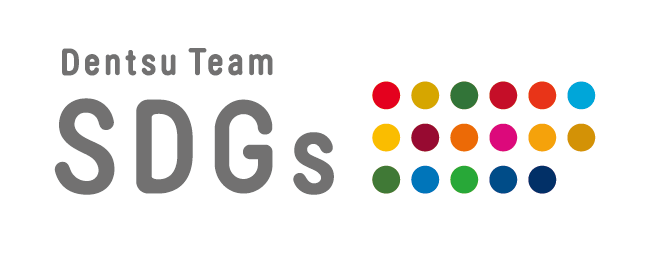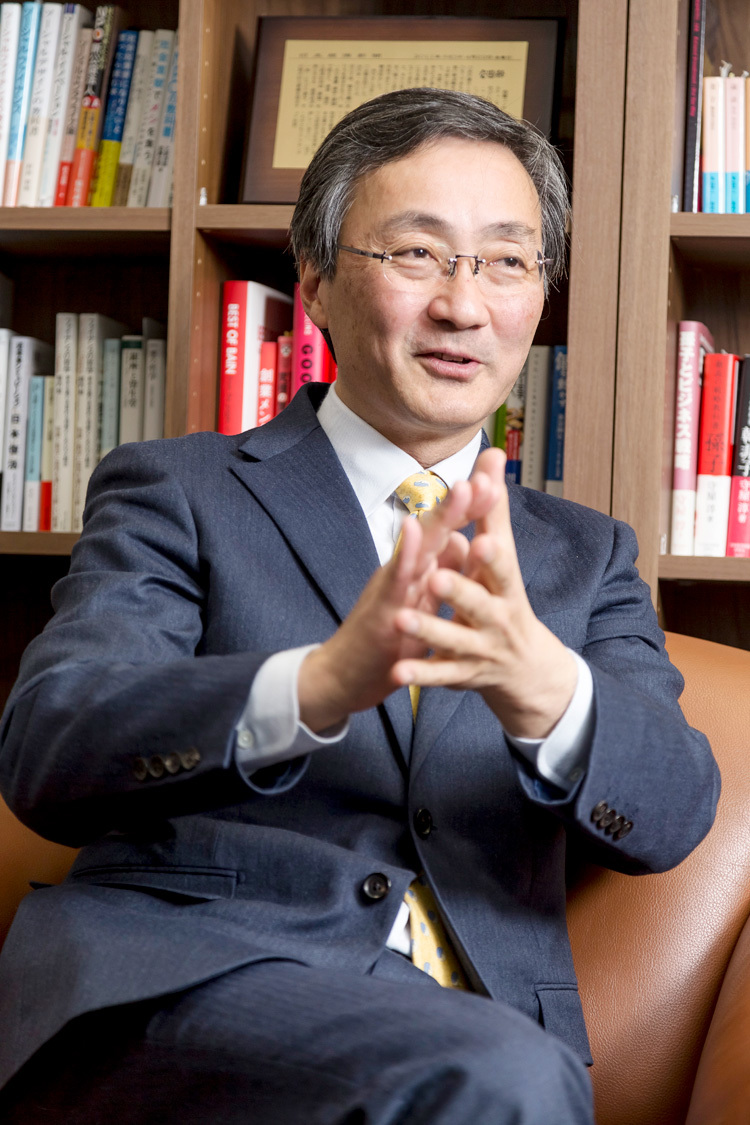As a means to achieve the SDGs, more companies are adopting "ESG management." Meanwhile, globally, a "post-ESG" movement is also gaining momentum. At this turning point in the era, what is the current state and challenges facing Japanese companies pursuing SDGs, and what should the corporate model of the new era look like?
This series explores hints for achieving the SDGs. This time, we interviewed Ken Shibusawa, the great-great-grandson (fifth-generation descendant) of Eiichi Shibusawa, known as the "Father of Japanese Capitalism," who was involved in establishing and managing approximately 500 companies. A financial specialist who worked at a foreign investment bank and served as the representative of the Japanese subsidiary of a major U.S. hedge fund, he also serves as an SDGs/ESG advisor. We asked him for his recommendations for Japanese companies.
Measuring corporate value is essential in the sustainable era
──Recently, more Japanese companies are working toward achieving the SDGs and realizing a sustainable society. How do you view this current situation?
Shibusawa: When we talk about Japanese business, it's often about the "three-way benefit" principle, right? The idea of "benefit for the seller," "benefit for the buyer," and "benefit for society" has led to much success. However, upon closer examination, there was no objective metric to measure that "benefit for society" – whether the company was truly contributing to society.
Without clarifying this ambiguity, a sustainable society cannot be realized. ESG investing—which requires companies to disclose non-financial value information from the perspectives of Environment, Social, and Governance, analyzes it, and determines investment value—can be seen as one effort to visualize "benefit to society." With the planet and society facing urgent crises, ESG perspectives are now firmly at the heart of investment.
──So, it's no longer possible to measure corporate value solely based on financial elements like how much assets a company holds or how much profit it generates.
Shibusawa: That's correct. In the United States, the discussion has advanced further, with "Impact Measurement" – which assesses a company's social and environmental impact – gaining attention as "post-ESG." From the corporate perspective, ESG investing often remains limited to disclosing information in response to investor requests. Essentially, companies are in a reactive position, merely demonstrating that they are environmentally conscious or compliant with laws.
In contrast, impact measurement is about companies taking a more proactive stance, aiming to understand the impact their business activities have on society and the environment. This goes beyond just the impact of the finished products or services on society. It also encompasses measuring how much consideration is given to the environment during the production process, whether human rights are properly respected throughout the supply chain, and whether employees are paid fairly.
──So it's about demonstrating to society that you can balance social contribution with the pursuit of profit?
Shibusawa: Yes. Research has even begun on incorporating this into accounting systems. If this becomes reality, it will represent a major paradigm shift for companies. In any case, companies will increasingly be required not only to disclose information about environmental considerations and social contributions but also to demonstrate their intent regarding impact.
The most undervalued corporate asset today is "people"
──How much non-financial value do Japanese companies currently hold?
Shibusawa: There's an investment metric for evaluating a company's stock price called "PBR (Price Book-value Ratio)."
P (price) represents the stock price, indicating how much the company is valued by the capital market. B (Book-value) is the company's net assets—simply put, its financial value after subtracting liabilities from assets. R (ratio) is the ratio. PBR is the stock price divided by the net assets per share.
If the PBR is 1.0, it means the value seen by the capital market equals the company's financial value. If the PBR is above 1.0, it indicates that the future potential or expectations are greater than the currently visible financial value. Conversely, companies with a PBR below 1.0 are seen by the capital market as having negative non-financial value. In Japan, about 40% of companies currently have a PBR below 1.0. While stock prices are making headlines as hitting 30-year highs, I feel the future for many Japanese companies isn't necessarily bright.
──Why are Japanese companies perceived as having low value? What exactly does "non-financial value" refer to in the first place?
Shibusawa: There are various factors, but in a word, I believe it boils down to "people." Companies often say that people are their greatest asset, but when it comes to properly visualizing the value of that human capital, it seems they often fall short. Each individual working within a company is building its future value. Therefore, companies with a PBR below 1.0 are essentially being told by the capital markets, "Your company's human capital has negative value."
When I say this, executives often respond, "No, that's not true. Our company has such outstanding talent." But currently, the only way to financially visualize human capital is through labor cost verification. Simply put, companies are boosting profits and enhancing corporate value by cutting back on their most crucial asset: people. Yet this approach makes sustainable value creation impossible. That's why we need to accurately visualize human value. This is precisely why I expect impact measurement, as mentioned earlier, to hold the potential for revealing the value of human capital.
Some executives might resist revealing non-financial value, thinking, "I don't want to see the company's negative aspects." However, impact measurement can be effective for identifying areas needing improvement within one's own company. By confronting and resolving visualized challenges, companies will ultimately gain recognition from capital markets, leading to increased market value.
Investment in human capital is essential for corporate growth
──Regarding human resources, what should Japanese companies consider?
Shibusawa: The issues I perceive in current Japanese companies are the mass hiring of new graduates, seniority-based systems, and lifetime employment. These models may indeed have been successful in the Showa era. However, in today's Japan, with its declining birthrate, aging population, and shrinking overall population, continuing these models offers no bright future.
In recent years, more young people view "working at the same company for life" as no longer the default. Going forward, we need to create systems that promote employment fluidity. Simultaneously, it is urgent to invest generously in limited talent and properly develop people.
──Doesn't increasing employment mobility while investing heavily in talent development seem contradictory?
Shibusawa: In Japan, there's a culture of "learning by watching your back," where people stay at one company long-term to learn, and I suspect this leads to lower spending on things like new employee training. Recently, I was shocked by data in a Ministry of Health, Labour and Welfare report showing that Japan's "human resource development expenditure" as a percentage of GDP is overwhelmingly smaller compared to other countries. Japan's GDP isn't expanding. This data essentially shows that Japan is simply cutting back on spending for human resource development.
This will cause young people to leave. In the coming era, it is crucial to invest in human resource development, entrust talented individuals with responsible work early on, and evaluate them accordingly. The old ways won't work: not providing proper training, not entrusting meaningful work, or assuming time will solve problems through long tenure. Companies must also become attractive enough to make people think, "I could thrive elsewhere, but I want to work for this company." To achieve this, impact measurement is essential. Companies need to proactively demonstrate the scale of their investment in human resource development, the quality of their training programs, and how these developed talents contribute to society.
The forward-thinking philosophy of "The Analects and the Abacus" that remains relevant today
──For business professionals in their 30s and 40s, what mindset should they adopt moving forward, and what advice do you have for their work?
Shibusawa: What I want to convey to those in their 30s is this: don't be defeated by the three phrases organizations often use – "There's no precedent," "It won't get approved by upper management," and "Who will take responsibility?" If colleagues or superiors use these words, I want you to tell them, "Those are no-go words." I feel it's crucial to foster a corporate culture where pointing this out becomes second nature. I want you to keep creating new value so that when you reach your 40s and 50s, you can confidently say, "I've created so many precedents."
I believe those in their 40s are facing a particularly challenging generation. With a large population relative to younger generations, many likely feel anxious about the future. That's precisely why my advice is to "invest" in your future. This includes financial investment, like setting aside a fixed amount each month starting now, but I also strongly believe "investing in yourself" is crucial. When you consider a 100-year lifespan, what will you be able to do after leaving your company? While thinking about the work right in front of you, I strongly encourage you to start consciously thinking now about building your own value outside the company.
──Finally, could you share a point from the book "The Analects and the Abacus" by your great-great-grandfather, Eiichi Shibusawa, that remains relevant today?
Shibusawa: The single point I want everyone to focus on in "The Analects and the Abacus" is just one word: "and." It's not "The Analects or the Abacus," but "The Analects and the Abacus." What we can glean from this is that combining seemingly unrelated things like "The Analects" and "the Abacus" can create new value.
This concept remains relevant today. For instance, in modern business, the "or" approach is often emphasized. Either 0 or 1, black or white, profitable or unprofitable. Of course, this ability is indispensable for enhancing efficiency and productivity. However, the power of "either" alone cannot spark a greater chemical reaction. What matters in today's rapidly changing world is not merely adapting to the times, but using the power of "and" to create something new that stays one or two steps ahead. This should also connect to modern concepts like the SDGs and sustainability.
 TeamSDGs collaborates with various SDG stakeholders to disseminate information about the SDGs and plan/develop solutions.
TeamSDGs collaborates with various SDG stakeholders to disseminate information about the SDGs and plan/develop solutions.








